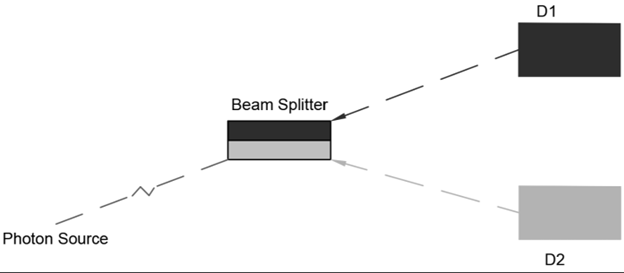Optics for Optical Quantum Computing
The key to powerful computing systems lies in optics due to the potential of optical quantum computers to greatly outperform traditional computers. Optics play a critical role in the manipulation of light particles (photons) to solve complex problems that cannot be touched by traditional computers.
This article examines what quantum computing is all about and why optics are required for its success.
What is Optical Quantum Computing?
Optical quantum computing, or photonics quantum computing, uses photons as qubits, the building blocks of quantum information, to move data. There are a number of different types of quantum computing systems that use optics in varying ways. A major approach is linear optical quantum computing (LOQC), where linear optical elements like tiny reciprocal mirrors and wavelengths are used for processing quantum information. This information is identified and stored using photon detectors and, in theory, quantum memory.
Other fundamental optical elements involved in LOQC are:
- Beam Splitters: Used to create superpositions and entangle photons.
- Phase Shifters: Precisely manipulate the photon phase.
- Waveplates: Control photon polarization.
- High-Efficiency Photon Detectors: Measure quantum states and enable probabilistic quantum gates.

Single-photon input at beamsplitter; detectors measure transmission or reflection outcome. Image Credit: Avantier Inc.
Optics for optical quantum computing can alter how we detect, discover, and store information.
Optical Computing Today
LOQC is still in development, and a few larger challenges, such as scalability, error correction, and maintaining qubit coherence, still require consideration.
Quantum computers are limited to experimental prototypes, which are often clunky, as is to be expected of an experimental prototype. However, some quantum computers undergoing development offer promise when it comes to taking on specific issues in areas like drug discovery and materials science:
- Materials Science: Simulating complex molecular structures for drug discovery and new material development.
- Optimization Problems: Finding optimal logistics, finance, and resource allocation solutions.
- Machine Learning: Accelerating specific machine learning algorithms.
Computers are now more powerful, affordable, and more effective than ever at completing tasks. However, the future of computing could be in optical quantum computing, and revolutions in optical quantum computing that are being uncovered could revolutionize the field in the years to come.
In fact, some quantum computing systems have already begun to change the way we detect, investigate, and communicate.
Optical communication, in some cases based on lasers, has proven to be quicker and offers greater reliability than radio-based communication over long distances. Quantum communications enables the sending of data (as qubits) to distant places while also providing data security to a level that the internet cannot. Photonic integrated circuits (PICs), an integral aspect of quantum operations, are currently revolutionizing diagnostic medicine.

Quantum computing centers the importance of optics by putting light in the driver’s seat.’ Image Credit: Avantier Inc.
Photonic Integrated Circuits
Photonic integrated circuits can be thought of as analogous to conventional integrated circuits, but where photons are used rather than electrons. Currently, photonic integrated circuits are used for diagnostics in medicine, as the power behind highly sensitive biosensors and ‘labs-on-a-chip’.
Beyond their established uses in medical diagnostics, biosensors, and ‘labs-on-a-chip’, PICs are crucial for:
- Scalable Qubit Architectures: Integrating multiple quantum components on a single chip, reducing size and complexity.
- Reduced Loss: Minimizing signal degradation over short distances on the chip.
- Enhanced Stability: Offering robust platforms for precise photon manipulation.
Quantum Communications
Optics are integral to quantum communication, a field that is ready to revolutionize secure data transfer.
- Quantum Key Distribution (QKD): QKD uses the key principles of quantum mechanics, using photons as qubits to transmit cryptographic keys. The power of QKD lies in quantum superposition (where a qubit can exist as 0, 1, or both simultaneously) and quantum entanglement (where two qubits are linked, regardless of distance). When these photons are interfered with, their quantum state is altered, alerting the communicating parties. This provides provable security, which is impossible with classical encryption methods.
- Quantum Teleportation: Quantum teleportation involves the transfer of a quantum state from one location to another without physically moving the particle itself. It is an essential feature for future quantum networks, facilitating the distribution of entanglement over long distances. Information can be relayed via single photons, photon modes, or even single atoms.
Quantum light networks are currently in use to a limited degree, but they are likely to become more common in the coming years. Large scale quantum networks are currently in development, with engineers working to address issues like noise reduction, scalability, and automated error corrections.
Avantier’s custom optics, such as ultra-low-loss optical fibers or specialized detectors, are designed to meet these requirements, allowing the development of resilient and high-fidelity quantum communication structures.

One important use of optics in optical quantum computing involves powering a quantum communications network. Image Credit: Avantier Inc.
High Numerical Aperture (NA) Objective Lenses in Quantum Systems
Beyond optical quantum computing, high NA objective lenses play a critical role in other quantum computing modalities, particularly those involving atomic and trapped-ion systems. These specialized lenses are essential for:
- Efficient Photon Collection: Maximizing the collection efficiency of photons from single atoms or ions is vital for high-fidelity state readout, quantum networking, and entanglement generation. A higher numerical aperture (NA) captures a larger cone of light, greatly improving the signal-to-noise ratio.
- Precision Qubit Addressing: Achieving the precise focus required to individually address and manipulate single atoms or ions with laser beams. This precision is vital for quantum gates and state preparation.
- High-Resolution Imaging: Enabling high-resolution in situ imaging of individual atoms or ions within optical traps or lattices, allowing researchers to study quantum effects at the single-particle level and verify experimental setups.
- Optical Trapping & Cooling: Quantum experiments rely on creating and maintaining tightly confined optical traps, or ‘tweezers,’ which isolate and cool atoms or ions to ultra-cold temperatures.
The design and manufacturing of high numerical aperture objectives for quantum applications present unique challenges, including the need for low aberrations, specific wavelength optimization, and often compatibility with cryogenic or ultra-high vacuum environments.
Optics for Optical Quantum Computing at Avantier
Avantier is focused on providing custom optics of the highest quality and thrives on that challenge. They believe the future of computing is in quantum mechanics and photonics, and high-quality micro optics will be essential.
The Avantier designers and optical engineers are uniquely qualified to design and manufacture the optics required to power tomorrow’s communication and computing systems. Their state of the art manufacturing equipment guarantees that all parts required are created immediately. Precision metrology equipment allows for the production of reliable high performance optical components and systems. They pride themselves on standing behind every micro optic they produce.

This information has been sourced, reviewed, and adapted from materials provided by Avantier Inc.
For more information on this source, please visit Avantier Inc.